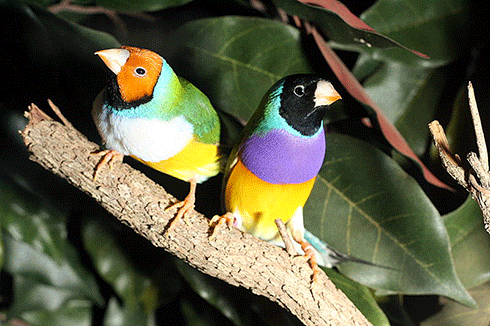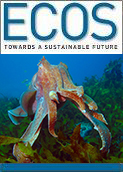
|
Published: 10 September 2013
Are altered fire patterns threatening endangered finch?
A research project investigating how fire affects the food source of one of northern Australia’s most iconic bird species could provide clues to its future conservation.

|
|
The new study will look at fires and the effect on sorghum grass seed availability for Gouldian finches and how this affects their breeding success. Credit: KJaques/Wikimedia commons under CC BY-SA 2.5
|
Once one of Australia’s most common wild finches, the Gouldian Finch is now listed as endangered under the Environment Protection and Biodiversity Conservation (EPBC) Act 1999. Charles Darwin University PhD candidate Anna Weier will look more closely at how bushfires are affecting breeding rates.
‘The landscape is changing,’ Ms Weier said. ‘Previous research suggests that areas where fires once burned sporadically in patches, now burn with an extended front over large areas.
‘These altered fire patterns can have a big impact on seed-eating birds because they burn the grass and grass seeds that the birds depend upon over landscape scale areas.’
Over the next three years, in collaboration with Save The Gouldian Fund and The Department of Parks and Wildlife WA, Ms Weier will look at fires and the effect on sorghum grass seed availability for Gouldian Finches and how this affects their breeding success.
‘Sorghum is an annual grass and the main food source for breeding Gouldians,’ she said. ‘We hope to find out more about how fire affects seed quality and availability, and if this in turn affects breeding rates.’
Ms Weier said sorghum seed set late in the wet season. ‘The birds rely on this food throughout their breeding season,’ she said.
‘We will aim to compare the quality of the seeds in areas that have been burnt with those that haven’t.’
Ms Weier will work around Wyndham in WA to monitor major Gouldian breeding sites, where permanent nesting boxes have been set up by Save The Gouldian Fund.
She said vulnerable species needed to be monitored constantly to ensure their ongoing maintenance and conservation. ‘There is always more to find out about a species, particularly when the environment is changing around them.’
The project is funded through the Australian Government’s Biodiversity Fund.
Source: CDU



